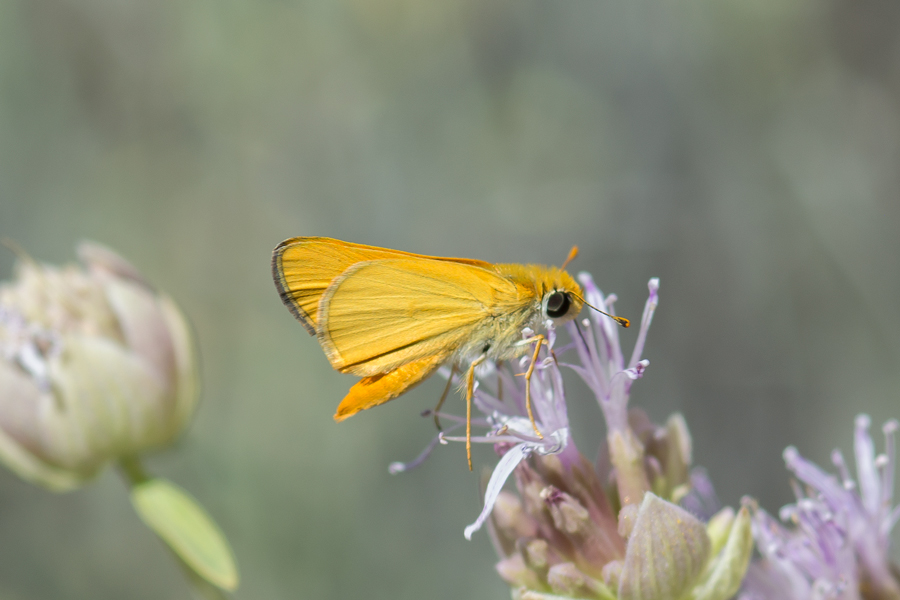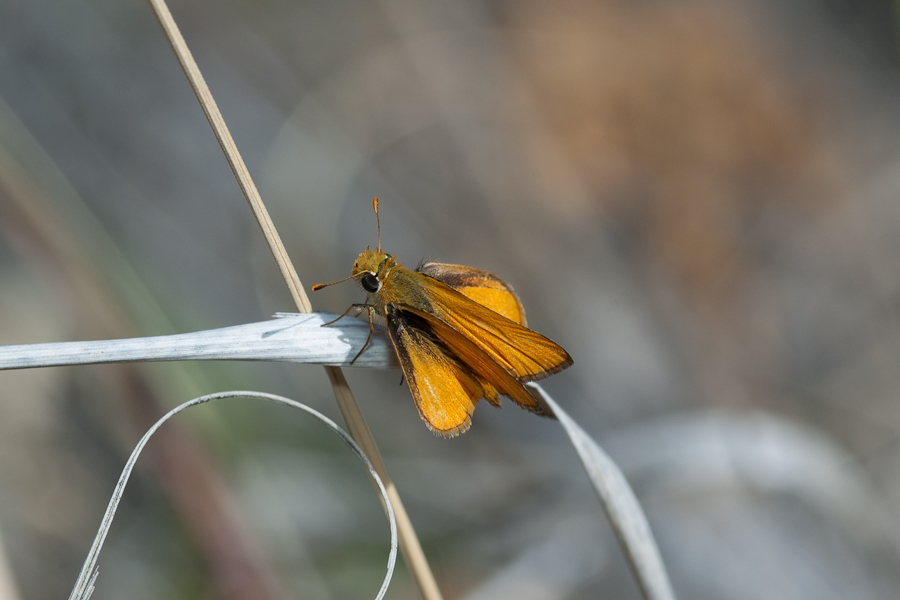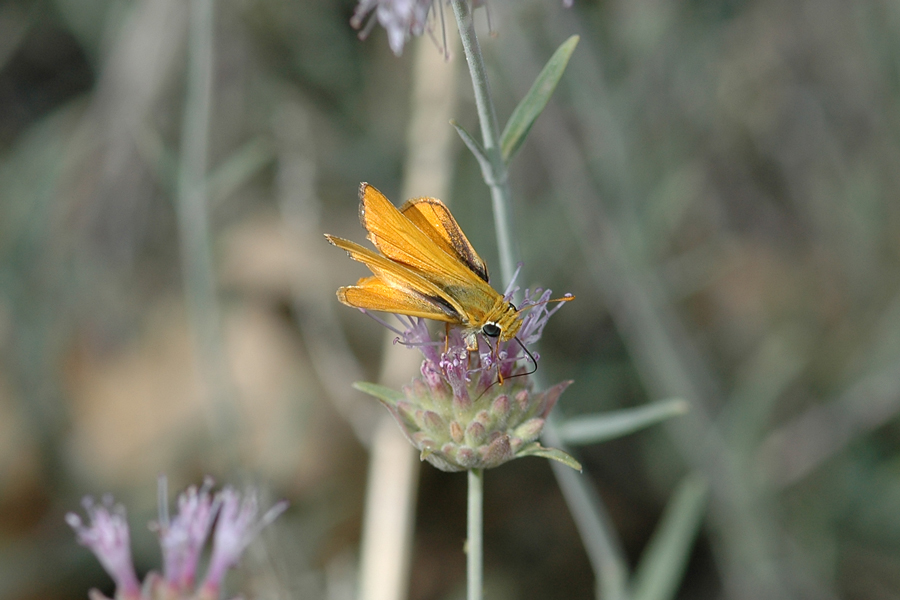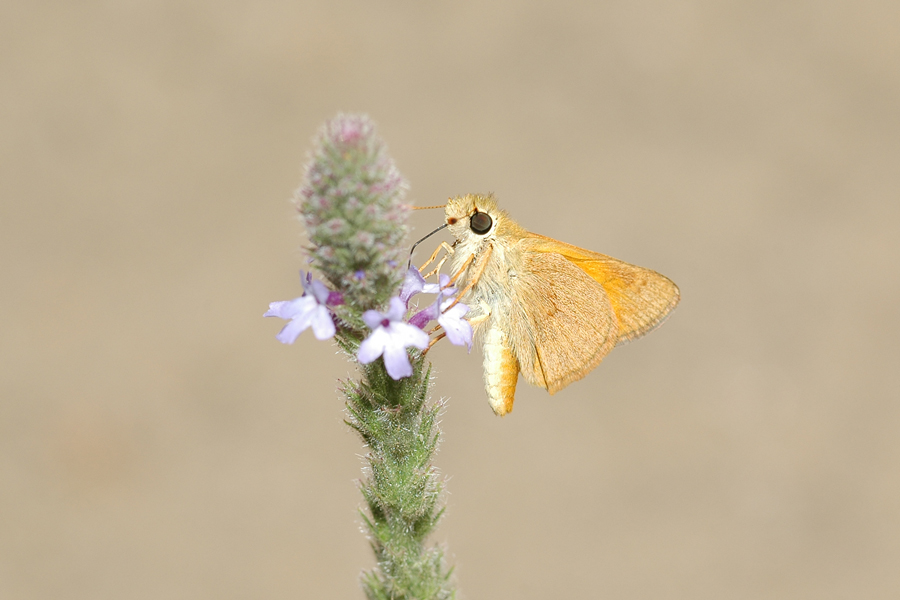Copaeodes aurantiaca
Orange Skipperling
The tiny, bright yellow-orange Copaeodes aurantiaca is found in the southwestern U.S., east to Texas and south through Mexico to around El Salvador. In southern California, it is a creature primarily of the desert edges and desert mountains, such as the eastern side of the San Jacintos, much of Joshua Tree NP, and the Laguna Mountains. I see it often at Cactus Spring Trail, around 4000' elevation in desert transition habitat. The flight is from around March to September, give or take a couple of months. According to Ken Davenport in his Emmel Update publication, "this species seems to have disappeared from the Inyo, Kern, and Tulare County locations for it in the past 30 years." Several grasses have been mentioned as larval food plants. When we were working on our book on the Joshua Tree butterflies and skippers, Jim Brock told us that he had found larvae on Bermuda grass (Cynodon dactylon), green spangletop (Leptochloa dubia), and sideoats grama (Bouteloua curtipendula), and he had seen it oviposit on Bamboo Muhly (Muhlenbergia dumosa) in Arizona.




